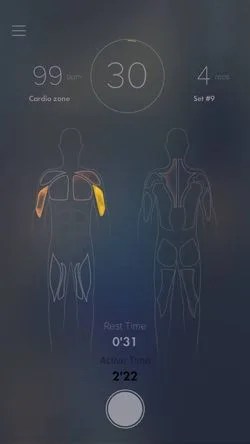For products that launch to the public with lots of hype, slick marketing and the promise of a better life, wearables can sometimes be a letdown, so much so that some research suggests that one in three customers stops using a tracker after six months of ownership, and even more ditch them in the long term. My experience is about the same, which is why I was genuinely excited the first time I did a workout while wearing a pair of compression shorts lined with eight electromyography, or EMG, sensors, which delivered real-time visual feedback to an iPhone, illustrating which muscles were firing and how hard they were working. Was it just the electrical signals in my shorts, or was Athos Apparel on to something?

My bet is on the latter. The product Athos offers is a pair of shorts (shipping November 2014) and a shirt (thereafter) equipped with a total of 22 EMG sensors (14 in the shirt, eight in the shorts), four heart rate sensors (two each) and two breathing sensors (just the shirt). From the outside, the warp-knit garments look, feel and behave like other high-end compression apparel: they have flat-seam construction, four-way stretch, moisture-wicking properties, UPF 50 treatment and are machine washable. The only noticeable difference is a small docking station on the outer thigh of the shorts and the upper arm of the shirt, where the “Core” clips in. The Core is the so-called “brain of the system”, a 2.5-inch-long, 20-gram, ellipse-shaped wireless device complete with the hardware and software to collect biosignals and send them to your phone (via Bluetooth), where they’re crunched and illustrated.
Athos apparel has all the same core functionality (measuring heart rate, breathing, body position) as many other wearable biosensors on the market or on their way — products like the new Ralph Lauren Polo Tech shirt, Hexoskin, or the Jawbone Up24. But the addition of EMG — the collection and evaluation of electrical activity produced by the muscles — is a very big difference indeed because it can tell us all kinds of things about our muscles, including how hard they’re working and exactly when they’re fatiguing. EMG has been studied for decades and used clinically for sports medicine and rehabilitation; the key for Athos was making it available to everyday athletes at a price that wasn’t institutional (the Core is $200 and each item of clothing costs $100) and presenting the information in a way that’s easily digestible. They’ve done both, creating a product that brings something fundamentally new to wearable biosensors and reminding us that we’re not on our way for a sci-fi world in which data streams from our shirts, shorts, sports bras, baby onesies and boxers — we’re already there.
